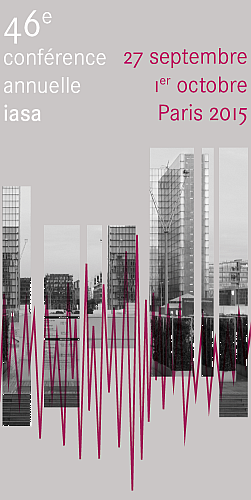At the Music Department of Universiti Putra Malaysia, that since 2 years offers university-wide the opportunity for audiovisual archiving in ARCPA (Audiovisual Research Collections of Performing Arts), the implementation of a course named ‘Sound Studies” is planned. If the establishment of ARCPA was already a great effort not only from the technical aspect but from the aspect of changing attitudes and mind sets within the academic environment of the largest public Malaysian University, one could wonder what the new course will mean to the involved parties.
While audio engineering and 'digital creativity' is a widely accepted business, it seems to be tremendously important to also attract interest into sound studies that include preservation of sound recordings, since a vast amount of recordings available in the region are shortly before their expiry date. The cultural situation in Malaysia nurtured over many decades a quite careless dealing with those resources that are stored under difficult conditions. Latest by now, it is time to improve the situation through educating man power and – at the same time – through teaching future users of documents preserved in AV archives.
One way to attract attention is an interdisciplinary embedding of skills and knowledge into a wider academic and industrial context and to connect them with the communities affected. In result, this approach helps a lot in promoting not only sound studies but awareness about historical sound events and future possibilities of preserving contemporary sound.
Here, one example is given. In the context of earlier sound production, i.e., we ask “How did people hear the real thing?” and try to project a possibility of how we can listen back into the past. We experiment with parallel digital and analogue recordings and try to figure out how the real music behind the recordings on now obsolete carriers might have been. The idea derives from a few simple thoughts: If one can produce a profile of unwanted sound and subtract it in sum from a recording, there should be also the opposite way: One should be able to detect a ‘wanted’ sound and add in sum to a recording. Today, there might be a possibility to detect in synchronous live recordings the principal differences between widely obsolete and high standard digital recordings. The findings can lead to an applicable algorithm or a model tool that helps to recreate a near to true sound environment which could be heard live in the past when these obsolete carriers were still standard carriers. This aspect plays an important role in a wider concept of preservation applied on postcolonial cultures with remarkable discontinuities in social developments.
Philosophically, it is not about modifying the original recording but about recreating the sound information provided through it in a new data object. Thinking further in this line, this process might be employed again in a couple of decades on recordings produced today.
This or similar ways to approach research partners and promoting AV archiving is an elementary condition in not only serving the community but possibly in giving opportunities for applications beyond contemporary academia. Some essential details of the planned teaching course and the way of attracting an increasing interest in AV archiving and preservation issues - exemplarily under Malaysian circumstances - should invite discussion among those dedicated to training and education in IASA.
Country:
MALAYSIA
Presentation type:
spoken paper
Date:
27 Sept Sunday
Start time:
930
Venue:
Belvedere 1
Abstract:

